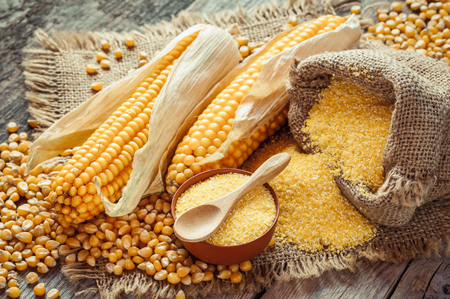Column: How to Avoid Misreading USDA’s Corn Acreage on Friday
Category: Grains

(Reuters) – Agriculture analysts are certain that the record-slow and extremely rainy U.S. planting season has caused total seeded corn acres to fall significantly from original intentions, though the magnitude of the reduction is still widely debated.
Regardless, it is vital to understand exactly how the figures that the U.S. government will publish on Friday are derived to avoid setting flawed expectations. Because of this year’s unique set of circumstances, it is possible that some market-watchers are overestimating the loss in corn acres at this juncture.
The U.S. Department of Agriculture will publish fresh, survey-based estimates for U.S. corn, soybean and wheat plantings along with area for cotton and small grains on Friday at noon EDT (1600 GMT). On average, analysts predict that U.S. corn and soybean acres will come in at 86.66 million and 84.36 million, respectively.
The corn prediction is drastically lower than USDA’s March intentions of 92.8 million acres. If the trade is correct, this would be the largest decline in acres from March to June since 1995, when the June figure landed 3.3 million acres below the March.
But the extreme planting delays meant that many farmers were still working their fields when the USDA survey was conducted, and this, along with a strong price signal, would likely be the cause if corn acres come in higher than expectations on Friday.
UNDERSTANDING PROCEDURE
USDA’s June acreage report is published by the National Agricultural Statistics Service (NASS) and the estimates within are based primarily on surveys conducted during the first two weeks of June. The surveys ask farm operators how many acres of each crop they have planted or intend to plant.
If an unusually large number of acres is reported as unplanted but intended, this may prompt NASS to conduct a special survey sometime after June of those operators that had yet to plant, to find out if they were successful. This is normally not an issue since U.S. corn and soybean planting is nearly complete by early June.
If the special survey suggests that actual planted acres vary significantly from the June estimate, NASS may adjust acres as early as the August Crop Production report. In a typical year, there is not enough information to warrant a change to corn or soybean acreage until October.
It is important to understand that the June acreage number is independent from other numbers – it is not an “update” from any previous estimate from any agency within USDA but rather a new survey. The March survey placed U.S. corn plantings at 92.8 million acres, but this does not mean that NASS is starting with that number in June and then adding or subtracting.
The same is true when it comes to the corn acreage reduction by USDA’s World Agricultural Outlook Board (WAOB) earlier this month. Some market participants view WAOB’s 89.8 million acres as a “ceiling” for corn plantings on Friday, but that is incorrect. The corn area number from WAOB’s monthly supply and demand report and the June estimate from NASS are not related, though WAOB traditionally adopts the NASS June figure in its July supply and demand report.
For example, it is perfectly feasible for U.S. corn plantings to come in above 89.8 million acres on Friday because there are no constraints in place for that number.
DID FARMERS PLANT CORN?
Only 67% of U.S. corn acres were planted as of June 2, sharply below the average of 96%. Progress jumped to 92% by June 16, and this implies that roughly a quarter of the corn crop was sown during the first two weeks of June while NASS was surveying.
There is no way to know by the planting progress numbers how many actual acres were planted because they are based on expected intentions the day of observation. Planting progress can include acres that were abandoned or switched to another crop.
But both prices and observations would suggest that many farmers planted corn wherever possible.
Severely delayed U.S. corn planting often switches many acres over to soybeans, which have a wider planting window. But by late May, new-crop soybean futures on the Chicago Board of Trade fell to the lowest levels relative to corn since 2012, suggesting that corn was the more profitable choice for farmers.
Additionally, most-active corn futures hit a three-year high at the end of May, jumping nearly a dollar a bushel above the mid-May low. Prices surged again during the second week of June to five-year highs with the new-crop December contract topping out at $4.73 per bushel.
New-crop November soybeans peaked at $9.48 per bushel a week ago, their highest level since early March, but below the average February price of $9.54, which is used to set insurance guarantees. The average price of new-crop corn in February was $4.
I drove through the northern parts of Ohio, Indiana, and Illinois last week where planting delays were most prominent and saw a lot more corn than I expected, especially in Indiana and Illinois. A lot of the corn was very small and newly emerged, suggestive of widespread June planting dates.
It is very possible that many farmers forged ahead with planting corn despite super wet conditions and the very late schedule based on the expectation for even higher prices later and the fear of missing out on the second round of U.S. government trade aid, which did not originally intend to cover unplanted acres.
If corn or soybean acres come in higher than expected on Friday, that does not necessarily mean that all those acres were planted. This would be determined later by NASS’s special survey.
And if the acres were planted, it does not guarantee a boost to production of any given amount. More acres surely increase production, but if the extremely late planted crops do not make it or yield extremely poorly, then the additional output could be much smaller than the market might think.




